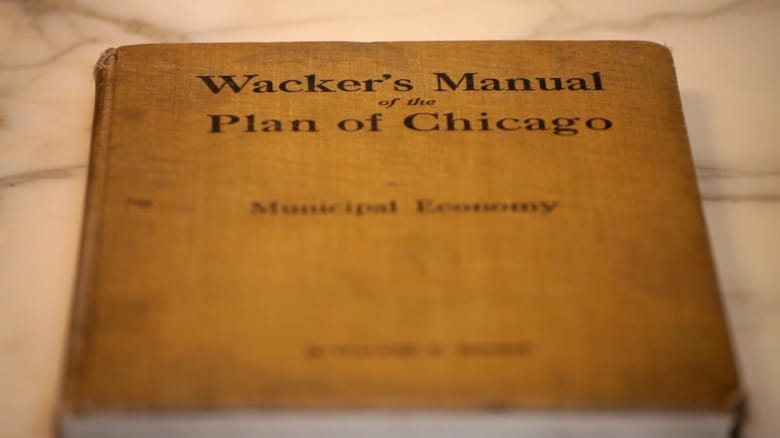Wacker’s Manual
Wacker’s Manual cover
Wacker’s Manual illustration
Wacker’s Manual map
Wacker’s Manual (1911), written by Walter D. Moody, was commissioned by the Chicago Plan Commission to promote adoption of Daniel Burnham and Edward Bennett’s 1909 Plan of Chicago. Its champion, Charles H. Wacker, saw the plan as an indispensable tool to make Chicago a great metropolis and promoted this plan through a junior high school textbook.
Intended for 8th graders, the illustrated manual was adopted by Chicago Schools Superintendent Ella Flagg Young as part of the standard Chicago civics curriculum and taught for more than 20 years. It begins by tracing the history of ancient European and American cities to provide a background for Chicago's “greatness.” Using these stories to support the Plan of Chicago, later chapters outline planning concepts for street systems, transportation and parks. The book highlights what will be required of youth in order to implement the Plan of Chicago.
At the end of each chapter, a series of study questions asks students to readdress the points made in each section. Wacker’s Manual was written as a document that both teaches and inspires students on the benefits of the Plan of Chicago. It includes diagrams of the city’s potential growth and renderings of future projects.
Although the textbook is not found in the curriculum of students today, its attempt to promote architecture and planning through youth education was influential in the early years of the Plan of Chicago. Embedded in the Wacker Manual is a basic, powerful assumption: everyone is a planner. Moody wrote,
“…our children shall be taught that they are the coming responsible heads of their various communities… We direct the national patriotic impulse into the paths of duty, and it is vital that we do the same with the new impulse for civic good."

























